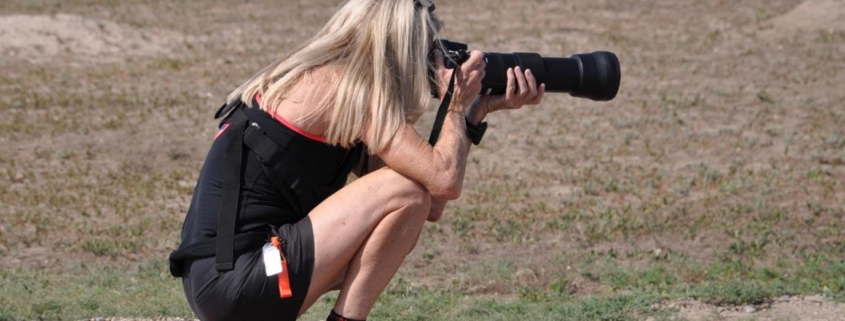How to Improve Your iNaturalist Photos to Better Help Scientists
Photo courtesy of Barbara J. Saffir
By FMN C.E. Hike Coordinator Barbara J. Saffir
(iNat username: DMVphotographer)
WHY USE INATURALIST?
If you want to contribute to citizen-science while exploring outdoors, iNaturalist’s free, user-friendly app and website provides the best virtual toolbox. Your data will actually get used. Real humans are available to respond to problems. You can join projects and interact directly with other observers around the globe. Plus, it’s downright fun! And iNat is powered by a world-class team of experts at the National Geographic and the California Academy of Sciences.
But before you start snapping pictures, learn how to improve your photos so your observations can be identified easier by iNat’s artificial intelligence, which, in turn, helps scientists more. Some helpful camera tips follow. But in some cases, it also helps to learn when you need to photograph specific parts of some critters or plants to identify them.
CAMERA
Whether you use a cell phone camera, a DSLR, a mirrorless, or a point-and-shoot, its best to learn your camera’s capabilities by practicing and by studying its manual.
APP OR WEBSITE?
Most of the time I photograph and upload directly from iNaturalist’s app because it’s faster, easier, and it’s the sole photo app I allow to use my location, due to privacy. Also, if I have cell service, I can identify observations in the field and upload them immediately — though I usually wait until I’m connected to a power source since those functions use a lot of “juice.”
However, instead of relying solely on unaltered photos uploaded directly from the app’s camera, your photos will be better if you tweak them first with a third-party processing program like Photoshop. In less than 60 seconds, you can often improve the composition (via cropping), lighting, sharpness, and more before uploading them to iNat. If you upload using your computer, you can batch-edit the dates and locations. The website is also better at identifying critters and plants because it gives you ranges and can confirm if observations of your organism have already been made in that county, adds a local science teacher who identifies thousands of iNat observations. She also recommends that you should only identify what you, yourself, can confirm. For example, she says if iNat suggests a “two-spotted bumble bee” but you’re only sure it’s a “bumble bee,” stick with that. Of course, beginners and/or casual users have to rely on iNat’s suggestions until they learn more.
BASICS FOR IMPROVING PHOTOS:
1. IN FOCUS: Look at your photo right away and if it’s not in focus, take another until it’s sharp.
2. SUBJECT SHOULD TAKE UP MOST OF THE FRAME: Get as close as feasible. Crop your photos to cut out major distractions, such as other species, weeds, and sticks. Don’t crop too much or it will result in poor resolution. Also, don’t waste your time using “digital zoom” on a camera because of its poor quality — unless you’re far away and you spot the Loch Ness Monster or Brad Pitt.
3. WELL-LIGHTED: Keep the sun behind you. Use flash or a flashlight if needed.
4. ADDITIONAL VIEWS MAY BE NEEDED FOR ID: Sometimes a close-up detail of an organism’s features, such as its underside, bark, leaves, head, etc., is needed. (See below for iNat’s ID tips.)
5. ADD SCALE IF NECESSARY: Use your finger, a ruler, a penny, etc.
6. NOTES: You can add notes to your observations, such as the number of plants or critters observed. You can also add that you shot a video if anyone wants to see it.
7. MISCELLANEOUS: Clean your lens before photographing. Check your battery. Use your foot, your chest, a tree, a fence, or another solid object as a makeshift tripod to prevent the camera from shaking. For plant photos, bring a piece of cardboard for a backdrop and to block the wind. Join iNat projects to share your finds with people who care about them most. Join local bioblitzes, such as City Nature Challenge each spring and Fairfax County Park Authority’s occasional bioblitzes.
INATURALIST’S PHOTO TIPS: To pinpoint certain species, such as mushrooms, flowers, turtles, snakes, and birds, it’s best to learn about those subjects independently to know what kind of details are required to clinch an ID of specific species. For example, with birds, it helps to photograph the entire bird, and to document important details, such as its color, shape, size, beak, behavior, habitat, and feather field marks (such as an eye ring or bars on its feathers) with photo(s) or in notes. https://www.inaturalist.org/guides/2465
PHOTO TIPS FROM RUTGERS UNIVERSITY: The photo below shows how a plain background works best for identification purposes. Click here for Rutger’s full presentation: https://botanydepot.com/2020/07/27/presentation-how-to-photograph-plants-and-more/

DISCOVERY TIME: So now that you’re prepared to contribute better photos to help citizen-science, the only question is: “Where should I go hunting for nature today?” You don’t even have to venture far from home. Fairfax County has more than 400 parks along nearly 1,000 miles of paved and dirt trails. Maybe you’ll even discover a whole new species. This year, Virginia Tech discovered a new species of millipedes on its own campus.




